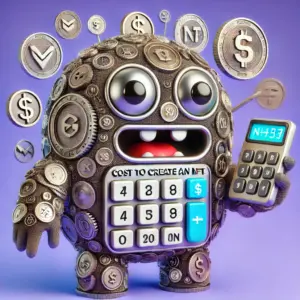Non-fungible tokens, or NFTs, are the latest craze in the digital asset world, offering unique ownership and scarcity to creators and collectors alike. With their growing popularity, one question often arises amongst NFT users: how do you actually transfer these digital collectibles from one wallet to another?
In this guide, we’ll unravel the entire process, addressing not only the technical aspects but also considerations for security and platform choices.
Understanding the Fundamentals
Before we dive into the actual transfer mechanisms, let’s get a handle on some key concepts:
- Blockchain: NFTs exist on blockchains, which are essentially decentralized, tamper-proof ledgers that track transactions. The most popular blockchains for NFTs include Ethereum, Solana, Polygon, and more.
- Wallets: Digital wallets store your cryptocurrencies and NFTs. They provide an interface to interact with the blockchain and come in a variety of forms (software wallets, hardware wallets, etc.).
- Public Wallet Address: This is a unique alphanumeric string that identifies your wallet on the blockchain, similar to an email address. It’s what you’ll need to send and receive NFTs.
The Transfer Process: A Step-by-Step Breakdown
Let’s break down the NFT transfer process into easily digestible steps:
- Compatible Wallets: The first crucial step is compatibility. Make sure both the sending and receiving wallets support the blockchain your NFT resides on. For example, if your NFT is an Ethereum-based asset, you’ll need an Ethereum-compatible wallet like MetaMask (https://metamask.io/) or Trust Wallet (https://trustwallet.com/).
- Accessing Your NFT: Open your wallet and navigate to the “NFTs” or “Collectibles” section, where your NFT collection will be displayed.
- Initiating the Transfer: Select the NFT you’d like to transfer and look for options like “Send,” “Transfer,” or something similar.
- Recipient’s Address: You’ll need to enter the public wallet address of the recipient. Double-check and triple-check to avoid errors, as sending an NFT to the wrong address can lead to permanent loss! You can also use ENS (Ethereum Name Service) domains, which are human-readable addresses.
- Gas Fees: Blockchain transactions aren’t free. “Gas fees” are transaction costs you pay to miners on the network to process your transfer. These fees fluctuate based on network congestion, so keep an eye out for optimal times.
- Confirming the Transaction: You’ll likely be prompted to sign and confirm the transaction through your wallet. This is your final check before the transfer goes through.
- Waiting for Success: Blockchain transactions take time to propagate. The waiting period can range from minutes to hours depending on the network and gas fees paid. You can track the progress on a blockchain explorer like Etherscan (https://etherscan.io/) for Ethereum-based NFTs.
Security First: Protecting Your Digital Assets
Security is paramount in the sometimes-volatile world of cryptocurrencies and NFTs. Here are essential tips:
- Protect your Seed Phrase: Never, ever share your wallet’s seed phrase with anyone. This is the master key to your wallet – whoever has it has complete control.
- Double-Verify Addresses: Take your time and carefully verify the recipient’s wallet address before confirming a transfer.
- Choose Reputable Wallets and Marketplaces: Stick to popular, well-established options to minimize the risk of scams or vulnerabilities
- Hardware for the Win: If you hold significant value in NFTs, a hardware wallet (e.g., Ledger https://www.ledger.com/] or Trezor https://trezor.io]) will greatly enhance your security.
NFT Marketplaces: Often Integrated and Simplified
Many popular NFT marketplaces make the transfer process incredibly seamless. Let’s consider OpenSea https://opensea.io], the largest NFT marketplace, as an example:
- Login: Navigate to the OpenSea website and connect your wallet.
- Profile: Go to your profile section, where you’ll see your owned NFTs.
- Transfer Button: Locate the NFT and click the “Transfer” button.
- Recipient: Enter the address or ENS domain of the recipient.
- Confirmation: Review details and confirm the transfer.
While OpenSea offers a streamlined transfer process, it’s important to remember that not all marketplaces function identically. While the core principles remain similar, specific steps, button names, and interface layouts might differ.
Here are some key points to consider when transferring NFTs through various marketplaces:
1. Look for dedicated “Transfer” or “Send” options: Most marketplaces will have clearly labelled buttons or menus specifically designed for transferring NFTs. Explore the platform’s user interface and familiarize yourself with the transfer process before initiating any transactions.
2. Additional fees might apply: While transferring an NFT itself may not incur additional fees beyond gas costs on the underlying blockchain, some marketplaces might charge platform fees on top of gas. Always review and understand all associated costs before confirming a transfer.
3. Advanced features: Some platforms offer advanced options for NFT transfers, such as the ability to:
- Set time-delayed transfers: This allows you to schedule an NFT transfer to occur at a specific time in the future.
- Include a message: You might be able to attach a personalized message to the recipient along with the transferred NFT.
- Use escrow services: Certain marketplaces offer escrow services for high-value NFT transactions, which hold the NFT in a secure vault until both parties fulfill their obligations.
4. Always double-check marketplace guidelines: Each marketplace might have its own policies and restrictions regarding NFT transfers. It’s crucial to familiarize yourself with these guidelines to avoid any potential issues. These can usually be found in the platform’s help center or terms of service.
Beyond Marketplaces: Direct Wallet-to-Wallet Transfers
While marketplaces offer a convenient user interface for NFT transfers, it’s important to understand that you can also transfer NFTs directly between wallets without relying on a marketplace. This method requires you to:
- Access your wallet and navigate to the NFT section.
- Locate the “Send” or “Transfer” option for the specific NFT.
- Enter the recipient’s public wallet address.
- Pay the gas fees associated with the transaction.
- Confirm the transaction through your wallet.
Direct wallet-to-wallet transfers offer a more decentralized and potentially cost-effective option, especially for users familiar with blockchain technology. However, they require a deeper understanding of blockchain interactions compared to the user-friendly interfaces offered by marketplaces.
Choosing the Right Method: Convenience vs. Control
Ultimately, the choice between using a marketplace or a direct wallet-to-wallet transfer depends on your individual preferences and priorities. If you prioritize convenience and user-friendliness, especially for users unfamiliar with blockchain intricacies, marketplaces offer a streamlined experience.
However, if you value a more decentralized approach, greater control over the process, and potentially lower fees, direct wallet-to-wallet transfers might be the preferred option.
By understanding the different methods and considerations involved in transferring NFTs, you can make informed decisions, ensure secure transactions, and navigate the exciting world of digital collectibles with confidence.






